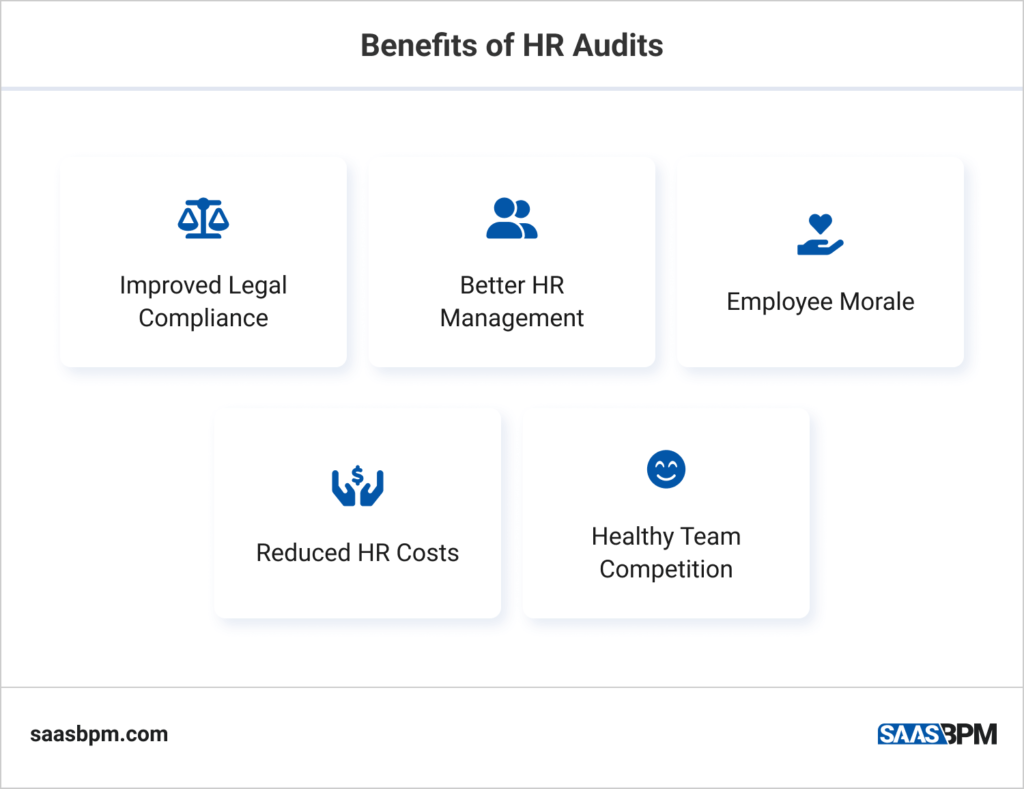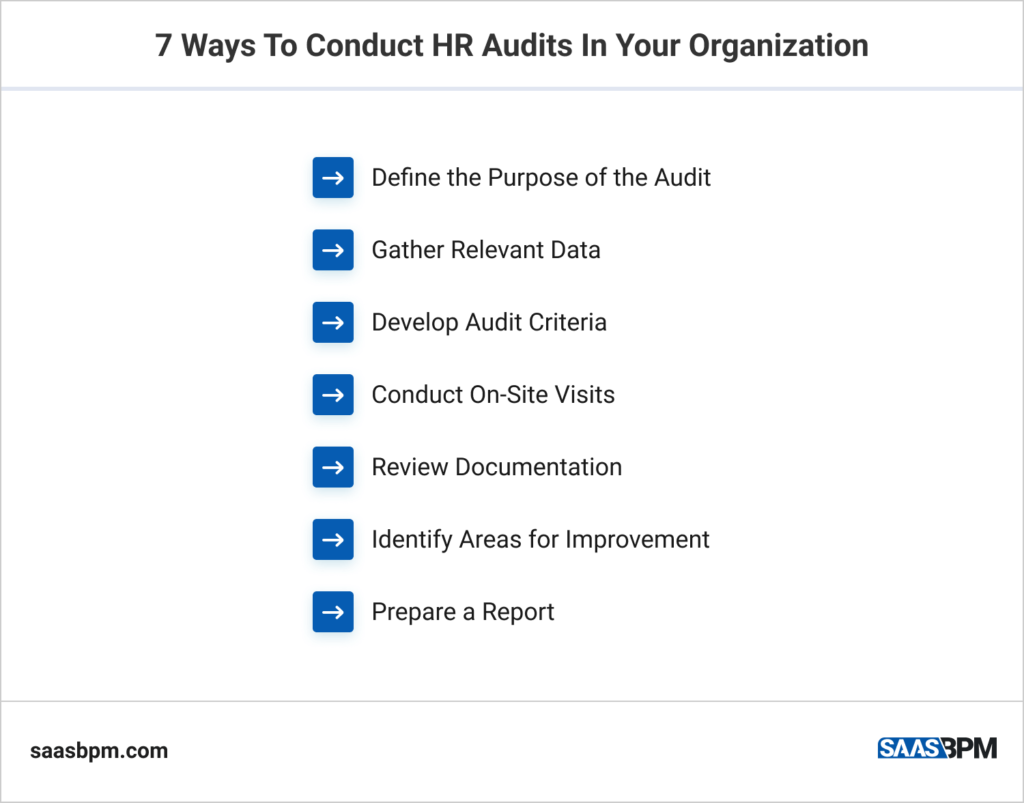Post-pandemic changes as well as economic challenges have put a spotlight on HR audit planning. With budgets tight and workforce spread across remote locations, employers have found themselves forced to develop strategies to ensure their companies continue to thrive and remain compliant with employment regulations.
Therefore, organizations are on a constant lookout for new ways to improve internal processes with automation. There are a lot of repetitive functions within a business that are imperative to sustain its growth and operations but can be better handled by a software solution.
HR audits are directed at identifying such tasks and optimizing them for better productivity of the work process. Our product SaaS BPM is structured to help you automate onboarding, communications and all business processes within your company. This guarantees optimal visibility, transparency, and efficiency, letting you work on the business, not in the business.
So, without further ado, let’s now deep-dive into what HR audits are and how they can help improve your internal workflows.
What Are HR Audits And Why Are They Necessary?
HR audits are a review of the practices and procedures of an organization’s HR department. Their main purpose is to assess how well it is complying with legal requirements, as well as how effective it is in managing people and processes. By performing regular HR audits, organizations can identify areas that need improvement and develop plans to address any weaknesses.
Benefits of HR Audits

HR audits are a valuable tool for organizations looking to ensure that their HR department is operating at its highest potential. There are many benefits of performing HR audits. These include:
– Improved compliance with legal requirements, such as employment law, health and safety laws, and discrimination laws
– Better management of the organization’s human resources
– Enhanced morale among employees
– Reduced costs associated with poor performance or employee turnover
– Improved competitive advantage in the workplace
As you can see, HR audits are beneficial to employers and employees. They can improve communication, identify training needs, and reduce risk. By conducting them regularly, you can create a more effective workplace and boost productivity within your team.
7 Ways To Conduct HR Audits In Your Organization

1. Define the Purpose of the Audit
The first step in conducting an HR audit is to define its purpose. What are you hoping to accomplish? Do you want to assess compliance with employment laws? Evaluate the effectiveness of your recruiting and hiring practices? Get feedback on your employee benefits program? Once you have a clear idea of what you want to achieve, you can develop a plan for conducting the audit.
2. Gather Relevant Data
The next step is to gather data that will be relevant to the purpose of your audit. This data can come from a variety of sources, including employee files, performance reviews, time and attendance records, and exit interviews. If you are conducting an audit of your compliance with employment laws, you will also need to review relevant statutes and regulations.
3. Develop Audit Criteria
After you have gathered the relevant data, you need to develop criteria for assessing that data. For example, if you are evaluating your recruiting and hiring practices, you might develop criteria such as: Are job postings accurately describing the position? Are qualified candidates being interviewed? Are offers being extended to the most qualified candidates? By developing clear criteria, you will be able to more effectively evaluate the data you have collected.
4. Conduct On-Site Visits
If possible, conduct on-site visits as part of your HR audit. This will allow you to get a firsthand look at how your employees are working and how your HR policies and procedures are being implemented. On-site visits also provide an opportunity to speak with employees and get their feedback on your HR practices.
5. Review Documentation
As part of your HR audit, be sure to review all relevant documentation, including employee files, job descriptions, performance reviews, and policy manuals. This will help you to identify any areas where your documentation is inaccurate or incomplete. It will also give you a chance to assess whether your HR policies and procedures are being followed consistently.
6. Identify Areas for Improvement
Once you have collected all of the data and reviewed all of the documentation, it’s time to start identifying areas for improvement in your HR practices. This may involve making changes to your policies and procedures or implementing new training programs for employees or managers. Whatever changes you decide to make, be sure to document them so that you can track their effectiveness over time.
7. Prepare a Report
After you have completed your HR audit, prepare a report that summarizes your findings and recommendations. Be sure to share this report with senior management so that they can take action on the areas that need improvement. Additionally, make sure to keep a copy of the report on file so that you can refer back to it in future years as needed.
In Closing
If you follow these seven steps when conducting HR audits, you can improve your organization’s workflows and see many benefits. These benefits include improved legal compliance, better HR management, increased employee morale, reduced HR costs, and healthy team competition. By taking the time to conduct HR audits on a regular basis, you will be able to identify areas that need improvement and make changes that will have a positive impact on your business.

